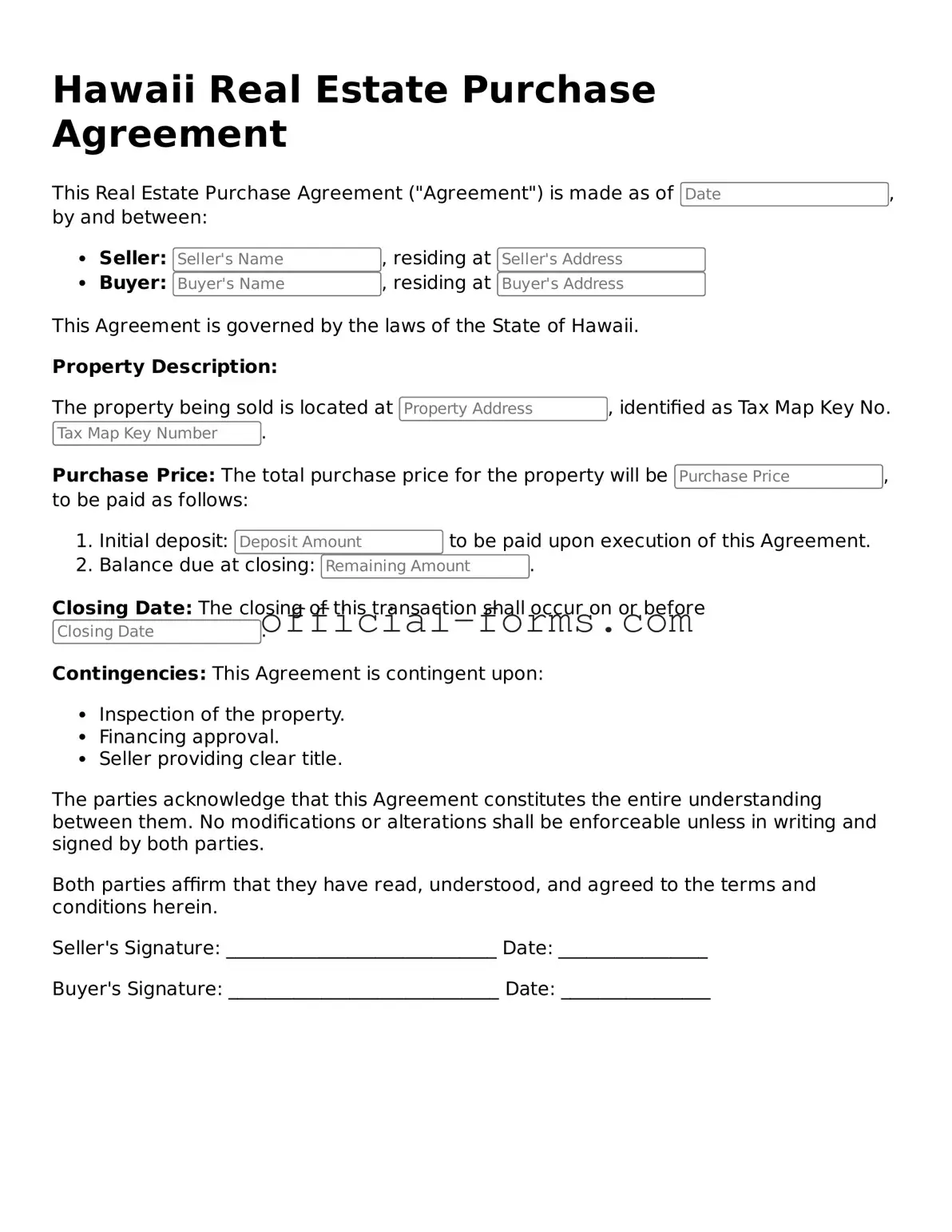Official Hawaii Real Estate Purchase Agreement Document
The Hawaii Real Estate Purchase Agreement form serves as a legally binding contract between a buyer and a seller in a real estate transaction. This document outlines the terms and conditions under which the property will be sold, ensuring that both parties understand their rights and obligations. Understanding this form is essential for anyone looking to navigate the Hawaii real estate market effectively.
Open My Real Estate Purchase Agreement Now
